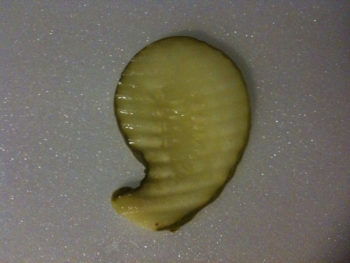Commas-in-chief Posted by Bjørn A. Bojesen on Jan 31, 2022 in Grammar
Kommaer er underlige. (Commas are strange.) Man skriver dem, men man kan ikke høre dem. (You write them, but you can’t hear them.) Well, sometimes you do hear them, as little pause/r (breaks) when people talk. In Denmark, people have been discussing the correct use of commas for ages, and most people are fed up with kommakrigen (the comma war). The current rules are, however, not very difficult. Let’s take a look!1Please note that my use of commas in English might not be ideal. 😉 🙂
As in English, you use commas in order to avoid having multiple ”ands” in lists. Instead of ”boller og smør og syltetøj og kakao og flødeskum” (buns and butter and jam and hot chocolate and whipped cream) you replace every og, except for the last one, with a comma:
boller, smør, syltetøj, kakao og flødeskum
Please note that it’s one separator or the other – ”Jylland, Fyn, og Sjælland” is wrong in Danish.2We don’t have the English ”Oxford comma”. 🙂 It should be: Jylland, Fyn og Sjælland.
A less whispery alternative to brackets, commas are also used to insert extra explanations or comments in phrases:
Hanne kommer også. (Hanne will also come.) > Hanne, min nabo, kommer også. (Hanne, my neighbour, will also come.)
Familien elsker strandture. (The family loves beach strolls.) > Familien elsker strandture, især om morgenen. (The family loves beach strolls, especially in the morning.)
You can also use a comma – combined with a conjunction such as og – to join two sentences that would otherwise be separated by a full stop:
Det blæser. Cyklerne vælter. (It is windy. The bikes fall over.) > Det blæser, og cyklerne vælter.
Det er koldt. Vi hygger os. > Det er koldt, men vi hygger os. (It’s cold but we’re having a good time.)
Some sentences can’t stand on their own – they’re dependent on another sentence in order to make sense. If you stay is a full sentence (with a subject and a noun), but it calls for the help of another sentence (such as we’ll be very happy). Another example of a ledsætning (subordinate clause): …that it’s bad for your health.
Once you get what a ledsætning is, the comma rules are easy in Danish:
• If the ledsætning comes before the main clause, it’s followed by a comma: Når solen skinner, nyder vi vejret. (When the sun is shining, we enjoy the weather.)
• If the main clause comes first, YOU CHOOSE: Vi nyder vejret når solen skinner. OR: Vi nyder vejret, når solen skinner.
The optional comma in front of ledsætninger is the most contentious issue in the Danish spelling wars. Skipping this comma may seem a bit progressive:3This is the tradition of Norwegian, English etc. De siger at du gerne må vælge den is du ønsker. (They say you’re allowed to pick the icecream you want.)
Most newspapers etc. stick to tradition, which says that every optional comma should be written:4This is the tradition of German, Denmark’s powerful linguistic neighbour to the south. De siger, at du gerne må vælge den is, du ønsker.
- 1Please note that my use of commas in English might not be ideal. 😉
- 2We don’t have the English ”Oxford comma”. 🙂
- 3This is the tradition of Norwegian, English etc.
- 4This is the tradition of German, Denmark’s powerful linguistic neighbour to the south.

Build vocabulary, practice pronunciation, and more with Transparent Language Online. Available anytime, anywhere, on any device.




